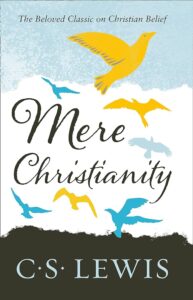In the quiet corridors of theological exploration, where purpose meets revelation, lies “Mere Christianity” by C. S. Lewis. First published all through World War II, this timeless work transcends denominational obstacles, inviting readers to delve into the central tenets of the Christian religion. As we step into its pages, put together to embark on an adventure that bridges mind and spirit.

The Man Behind the Pen
C.S. Lewis—Oxford Don, literary pupil, and author of Narnia—crafted “Mere Christianity” as a chain of radio publicizes at some level within the struggle.
His aim? To present a rational case for Christianity, stripped of denominational peculiarities. Lewis’s eloquence and readability resonate across time, making this e-book a beacon for seekers and believers alike.
The Law of Right and Wrong
Lewis posits an everyday ethical law—a compass embedded in human cognizance. Whether or not atheists or believers, we apprehend this law.
This “Moral Lawgiver” factors into something beyond ourselves—a divine source of ethics.
The Trinity: A Puzzling Clue
Lewis unveils the enigma of the trinity—the daddy, son, and holy spirit. He likens it to a dice: 3 dimensions, yet one entity.
The trinity guidelines at a god who is both private and cosmic.
The Great Divorce: Heaven and Hell
Lewis paints a brilliant image of desire. Heaven or hell? The chasm lies not in divine wrath however in human will.
Our choices shape our eternal destiny.
Legacy and Influence
Intellectual Honesty: “Mere Christianity” resonates with skeptics and intellectuals. Lewis’s reasoning invites talk.
Ecumenical Bridge: Denominations dissolve as readers draw close to the essence of faith beyond theological walls.
As you immerse yourself in “Mere Christianity,” keep in mind that it’s now not a treatise but a communication—a heart chat with a tremendous mind.
Whether you’re a seeker, a doubter, or a steadfast believer, Lewis beckons you to discover the mere essence of what it manner to be a Christian.
